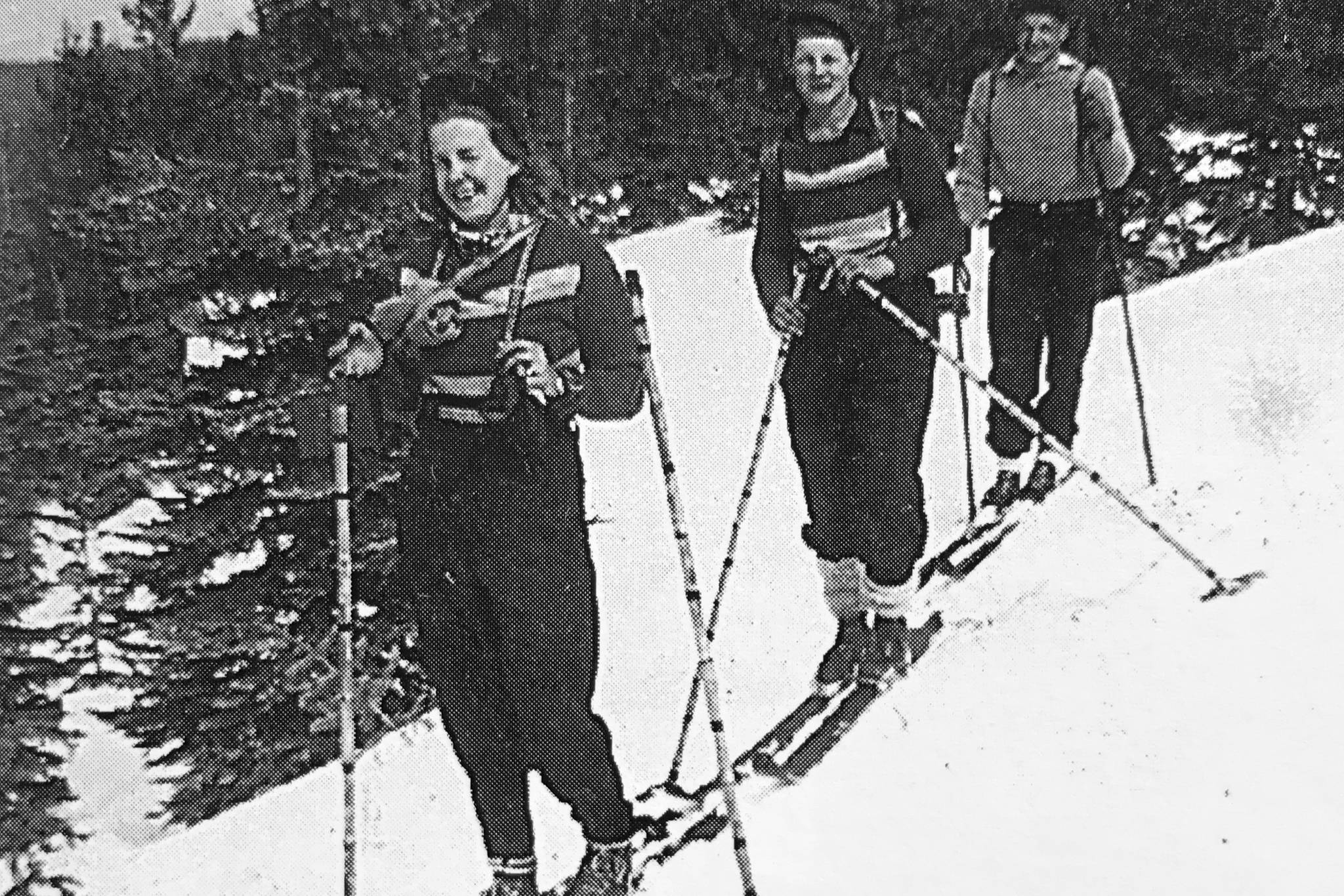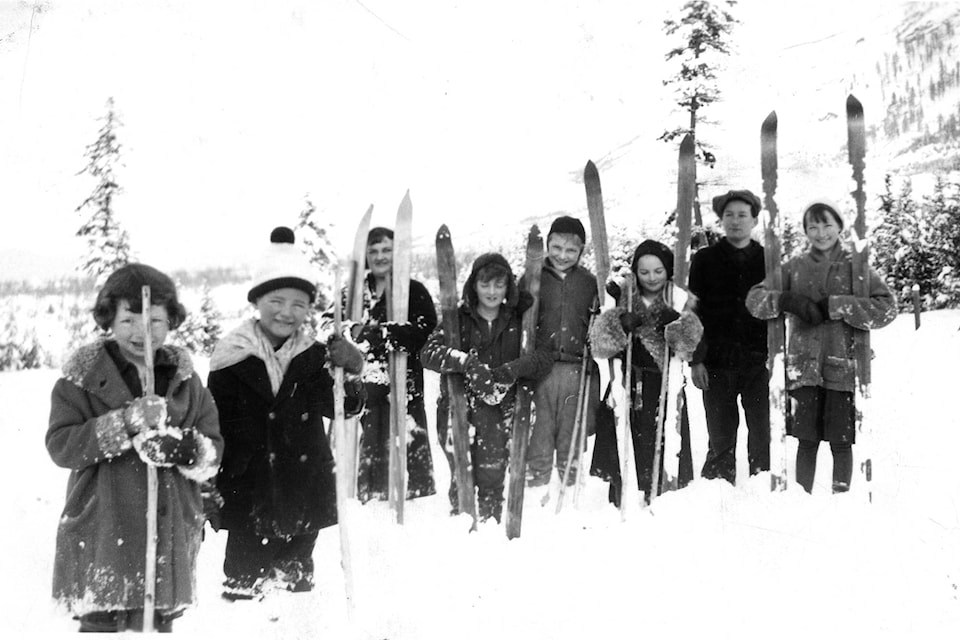There are many opportunities to ski in the Shuswap — three-tracked Nordic ski areas, backcountry ski options, three cat-skiing lodges, a downhill resort, a heli-ski lodge and any number of untracked logging roads, park trails or frozen lakes.
Few people realize a significant portion of Silver Star Mountain is in the Shuswap watershed, including about two-thirds of the Sovereign Lake trails and the backside runs at the resort in the Putnam Creek drainage.
The origins of our local skiing culture can be traced back to the arrival of the Scandinavian settlers who homesteaded at White Lake, Sunnybrae and Gleneden. They brought both their skills and their love of the sport with them, building heavy, homemade skis out of birch with leather straps.
In 1930, the Gleneden Finnish community formed a sport club that sponsored a variety of activities such as ski jumping on “Boot Hill” just above the hall and cross-country racing with homemade skis.
In the late 1950s and early ’60s, there was a passion developing for downhill skiing and a club was formed that purchased land in Salmon Arm below Mt. Ida on 9th St. SE to build a small ski hill.
A rope tow was built, but they soon realized due to the hill’s low elevation, snow conditions were not reliable enough for downhill skiing.
Colin Smith learned to ski on “Riddle Hill” and he remembers how a good skier would only do five turns from top to bottom.
There was a mound of snow in the centre of the run that was used for a jump. After a good snowfall, the club would gather on a Saturday morning to pack the hill with their skis.
Smith also skied at a larger ski hill east of Sicamous which had two rope tows.
Read more: Storm damage closes Tsútswecw park in North Shuswap, trees fall on cabin
Read more: Column: 2020s will bring roar of wildfires, storms, social upheaval
Read more: Column: Sport where stones slide to the house remains popular in the Shuswap
Gordie Lidstone built another downhill ski hill in the early 1970s on his property near the Industrial Park. It included both a rope and a cable tow.
There was also a warming hut and a concession, but lack of snow ended the venture.
In the late 1980s, a developer purchased the property adjacent to the cemetery on Foothill Road, cleared runs on the hill and used a snowcat to transport the skiers.
Unfortunately, he had not consulted with any locals about the unsuitable snow and weather conditions, which resulted in the ski hill’s closure after only one season.
There are three cat-skiing lodges in the Shuswap’s Monashee Mountains: Mustang Powder located northeast of Craigellachie, K-3 Cat Ski located northeast of Malakwa and Monashee Powder located northwest of Sugar Lake.
This is a sport for very fit, experienced skiers and snowboarders who enjoy steep runs in deep powder.
Eagle Pass Heli-ski has a lodge at Griffin Lake and much of its terrain is in the Shuswap.
For daytrips, the premier ski touring area in the Shuswap is Gorge Creek below Queest Mountain, which attracts skiers and split-boarders from as far away as Kamloops, Kelowna, Revelstoke and Vernon.
There is more than enough terrain to cover in a day and an abundance of steep slopes and bowls filled with deep powder.
However, there is only good access if loggers are plowing the road. If not, then a snowmobile is needed.
The area is included in the regional district’s park plans and hopefully one day a parking lot will be established along with a publicly funded winter access plan.
There are two backcountry ski lodges in the Shuswap.
The Blanket Glacier Chalet, built in 1982, was originally a telemark base camp for the Nordic Ski Institute.
The newer Sol Mountain Lodge, established in 2004, has 12,000 hectares of diverse terrain and is also open in the summer for hiking and mountain biking.

